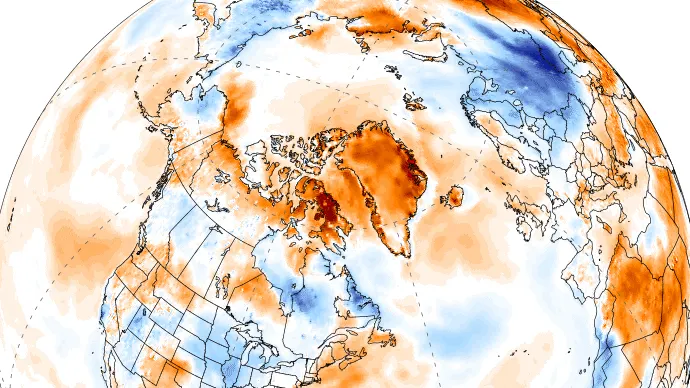
Ten billion tonnes of ice lost from Greenland ice sheet in just one day
What's Up In Climate Change? A heatwave over Greenland, NASA tracks soot from Arctic wildfires, and a new marine conservation area in Canada's North.
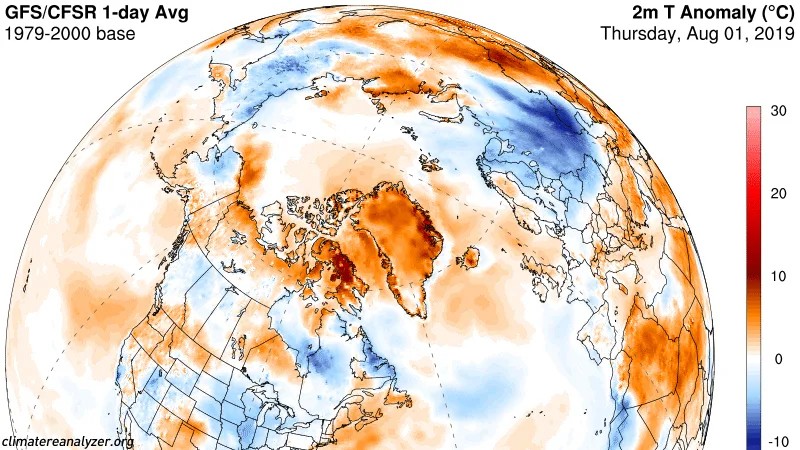
After an intense heatwave spread across Europe, pushing temperatures up to levels unseen before, that blob of extreme heat moved on to settle in over - of all places - Greenland.
As a result, it took an incredible toll on the Greenland ice sheet, with at least 60 per cent of the ice sheet suffering a millimetre or more of melting, which resulted in the loss of some 10 billion tonnes of ice in just one day, as it melted and poured into the ocean.
Ruth Mottram, a climate scientist and glaciologist with the Danish Meteorological Institute, pointed out that the ice sheet lost a total of 197 billion tonnes of ice for the month of July.
As the graph below shows, this amount of ice loss is very unusual for this time of year. It even exceeds the normal ice for the peak melt period, in mid-July.
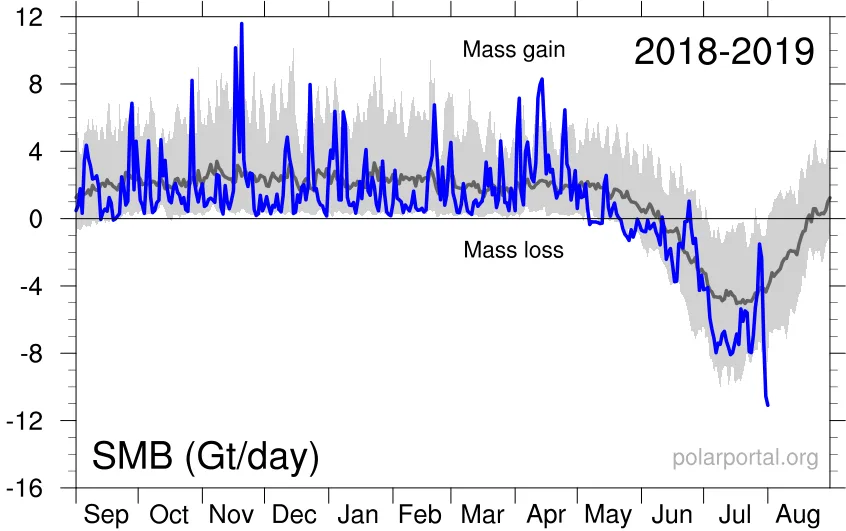
Graph of mass gain vs mass loss from the Greenland ice sheet, in gigatonnes per day. Credit: Polar Portal
NASA TRACKS ARCTIC WILDFIRE IMPACTS
With hundreds of wildfires burning across the Arctic so far in 2019, and over 100 just in June and July, there is a concern about how much smoke, ash and soot has been blowing across the Arctic, and what kind of impact this will have on the region, and the fragile ice that is so important to our climate.
According to NASA: "The animation above shows the concentration of black carbon particulates—commonly called soot—around the Arctic from July 1-29, 2019. The black carbon data come from the GEOS forward processing (GEOS-FP) model, which assimilates data from satellite, aircraft, and ground-based observing systems. To simulate black carbon, modelers include satellite observations of aerosols and fires. GEOS-FP also ingests meteorological data like air temperature, moisture, and winds to project the plume’s behavior."
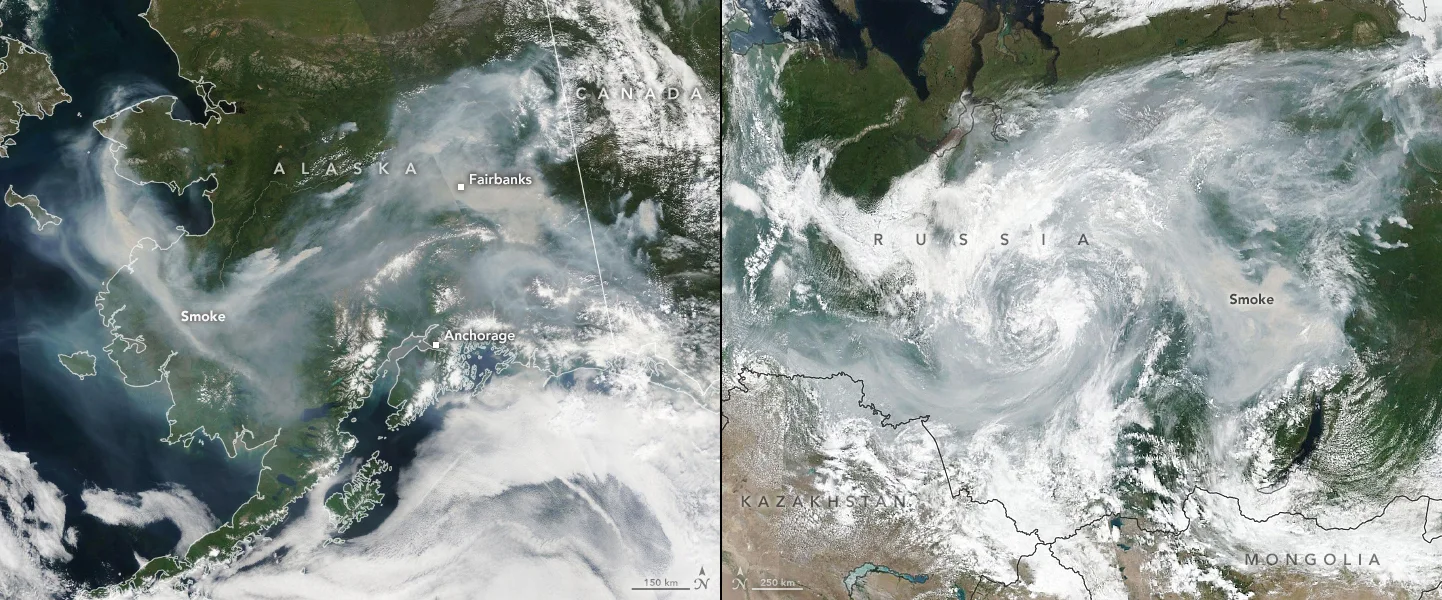
Alaska wildfires from July 8, 2019 (left) and Russian wildfires burning on July 24, 2019. Credit: NASA
Not only is black carbon a threat to animals and humans, as the soot particles can get deep down into the lungs, causing damage, but the dark particles settling out onto the ice accelerates ice melt, by changing the albedo of its surface. Sunlight is no longer reflected back into space as effectively, and more sunlight is absorbed by the soot, thus warming the ice surface and causing melting.
NASA says that there's so much soot from these fires because the wildfires are burning across peatland. Dry conditions from Arctic heatwaves has sapped the moisture from these peatlands, making them more susceptible to fire from lightning strikes.
The concern here is with what is known as 'climate amplifications', as NASA points out "Researchers worry that the increase in CO2 from the Arctic fires will warm the atmosphere even more, leading to drier peat soils and consequently more fires."
CANADA ON TRACK FOR MARINE CONSERVATION
Canada is establishing a new marine protected area off the coast of Nunavut, and this should put the government on track to meet its goal of protecting 10 per cent of the nation's coastlines by the year 2020.
Tuvaijuittuq, which is Inuktut for "the place where the ice never melts", is the new marine protected area off the northwest coast of Ellesmere Island. It will add over 5.5 per cent to Canada's total percentage of protected marine areas.
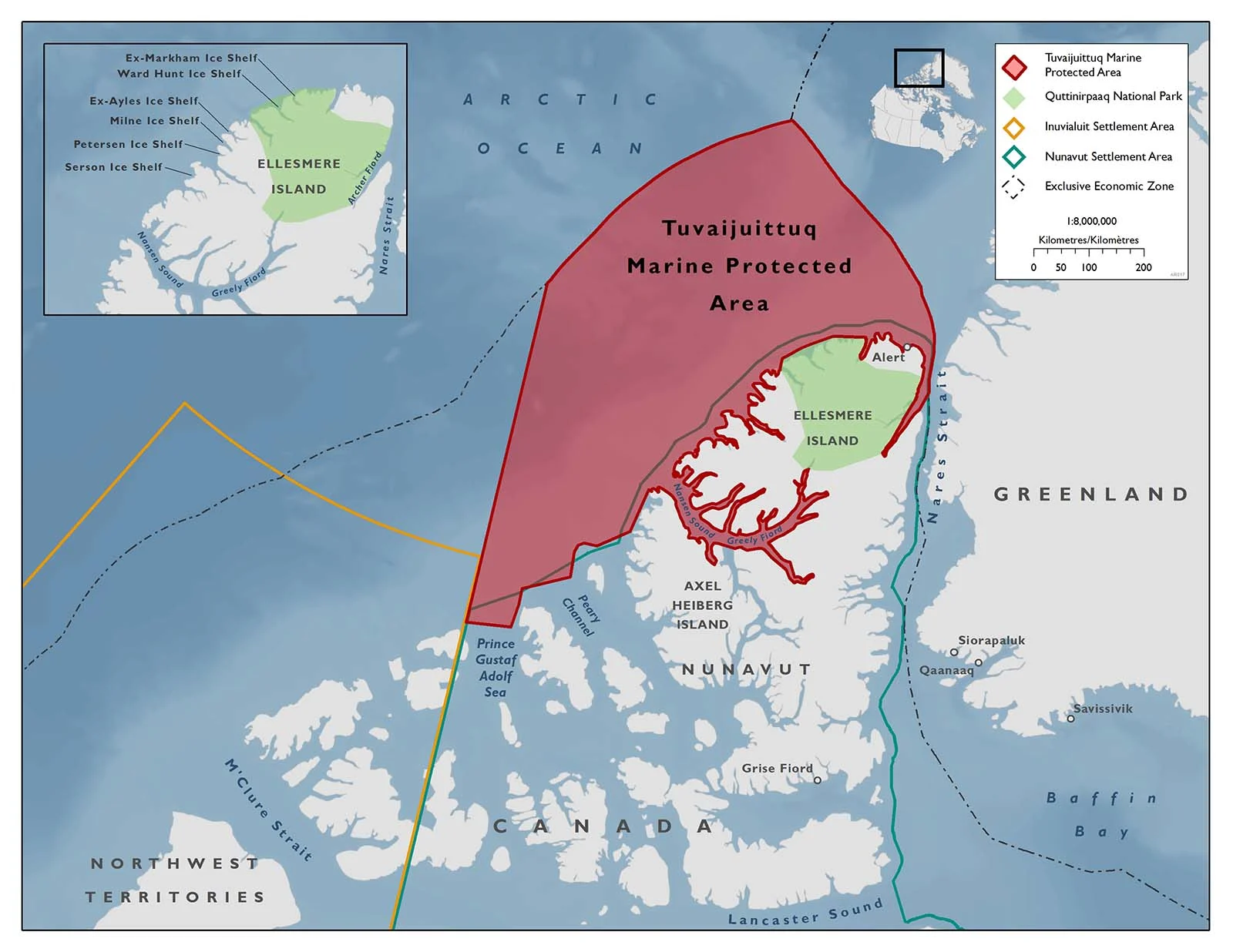
Tuvaijuittuq covers an area of 319,411 square kilometres. Credit: Government of Canada
"There is no question the climate crisis is changing the face of the Arctic as we know it. Populations of belugas, narwhals, walruses, seals, polar bears and thousands of other species who depend on year-round sea ice to survive are now migrating, dwindling, or in some cases, disappearing," Prime Minister Justin Trudeau said while visiting Iqaluit on Thursday morning. "For Inuit who have relied on hunting and harvesting to feed their families, climate change imperils their livelihoods and their way of life."
Sources: polarportal.dk | NASA | Government of Canada | CBC News











